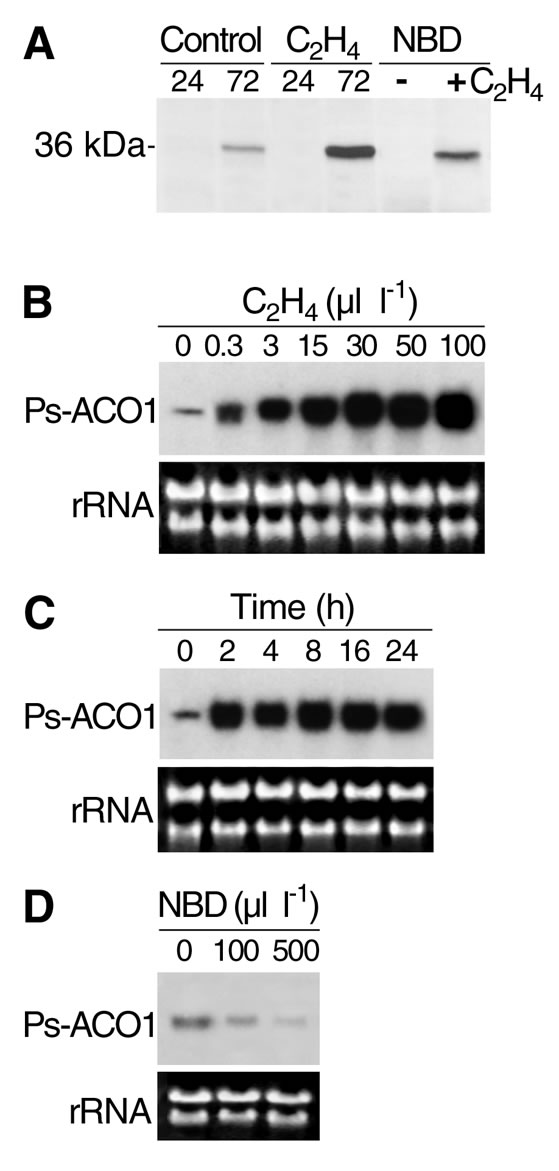Plant, Cell and Environment 26: 661-671 (2003)
Calcium requirement for ethylene-dependent
responses involving 1-aminocyclopropane-1-carboxylic acid oxidase in radicle
tissues of germinated pea seeds
Luciana Petruzzelli, Monica Sturaro, Davide Mainieri,
Gerhard Leubner-Metzger 
© Petruzzelli et al. Plant, Cell and Environment 26: 661-671(2003)
![]()
Figure 1. The effect of ethylene on the expression of the 36 kDa ACO antigen and of Ps-ACO1 mRNA in the embryonic axis of pea seeds.
(a) Immunoblot analysis of the 36 kDaA ACO antigen during the germination of pea seeds in the absence (Control) and presence of ethylene (C2H4) or NBD. Seeds were incubated at 20 ºC in the dark and treated as indicated with 20 mL/L ethylene, 50 mL/L NBD, or 50 mL/L plus 300 mL/L ethylene for the 24 h period before harvest. The time in hours after the start of imbibiton is indicated. Equal amounts (10 mg protein per lane) of embryonic axes protein extracts was loaded. For corresponding protein samples, ACO enzyme activities and Ps-ACO1 mRNA expression see Petruzzelli et al. (2000).
(b–d) RNA blot analyses using the pea ACO cDNA clone Ps-ACO1 (Peck et al. 1993) as a probe to hybridize with total RNA from pea embryonic axes (20 mg per lane; equal loading demonstrated by visualization of rRNA bands). The embryonic axes were dissected from pea seeds imbibed for 48 h followed subsequently by the indicated treatments.
(b) Treatment for 8 h with the ethylene concentrations indicated.
(c) Treatment with 30 mL/L ethylene for the times indicated.
(d) Treatment for 8 h with the NBD concentrations indicated. A representative experiment from three independent experiments with the same result is presented.
 |
Cover photograph of the May 2003 issue of Plant, Cell & Environment
related to this publication showing the effect of ethylene treatment on pea radicle growth View a larger image of the cover photograph in a new window (16 KB) |
| Article in PDF format
(332 KB) |
|
|
|
The Seed Biology Place
|
Webdesign Gerhard Leubner 2000
|